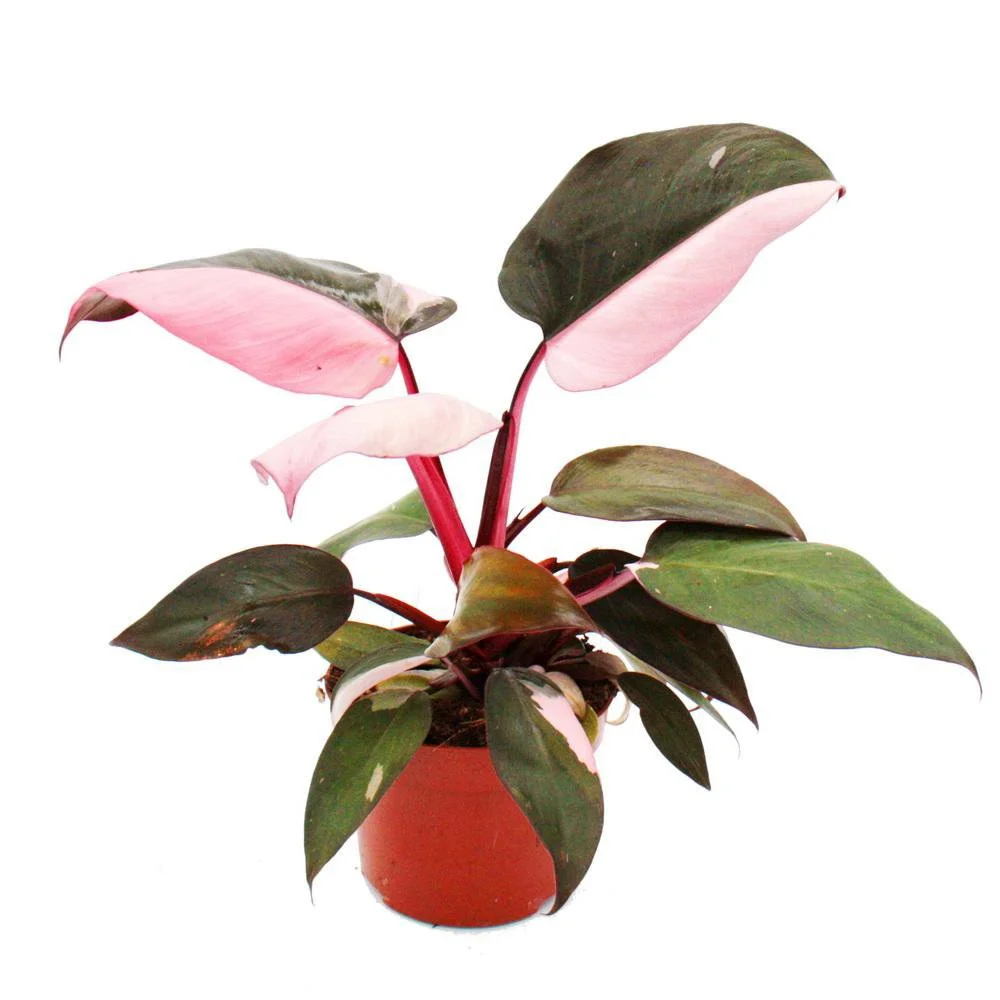Royal Philodendrons
Royal Philodendrons
Royal Philodendrons
Philodendron erubescens varieties
Care Guide
-
As with all variegated plants, variegated varieties of philodendrons need bright indirect light to maintain their coloring. The plants will grow just fine in only medium indirect light, but new growth will have less variegation and the plant may completely lose it’s variegation.
-
Their soil should stay slightly moist, and not completely dry out between waterings. Water when the top half inch to an inch of soil is dry.
-
Similar to light, warmer temperatures can support more variegation with these philodendrons. To support highly variegated plants, the ideal temperature range is 70-85F. They’ll be happy and healthy in 65-80F, but cannot tolerate below 60F.
-
Higher humidity paired with warmer temperatures can also encourage more variegation, as well as help the new leaves unfurl properly. 75-85% humidity is the best case scenario, but they can be perfectly happy and healthy in 55-85% humidity.
-
A chunky aroid mix is best for these plants, as it is loose and well draining but stays moist. More airflow being able to get in between the roots helps prevent root rot, and caters to this plant’s epiphytic nature.
-
Like all philodendrons, these contain calcium oxalate, and are mildly toxic to pets and people if ingested.
Philodendron ‘Pink Princess’
-
Philodendron Pink Princesses are variegated Red philodendron erubescens. Typically variegation shows up white or yellow, but with naturally red plants like these, it’s pink!
-
The longevity of the pink areas of the leaves depends on many factors. Those areas of the leaves don’t contribute anything to the plant, and cost the plant precious resources to keep alive. So as long as your plant is hydrated, nourished, and kept extremely healthy - it can keep the pink sections of its leaves. If the plant starts to lack nutrients, gets too little water, gets too much water, or gets too much sunlight, those pink areas will turn brown and start to die off.
But, it doesn’t always mean there is anything wrong with the plant. It’s also common for those pink areas to just turn brown and die off for no clear reason, especially if the plant has a lot of highly variegated leaves. Sometimes it seems like the plant just doesn’t want the upkeep of them, and will decided to just kill them off on a whim. They are princesses, after all - they’re bound to be a bit high maintenance.
-
The amount of variegation (pink) in each leaf is predetermined by the amount of genetic mutation in the plant. But there are things you can do to encourage the maximum expression of your plant’s variegation.
Light: The more light the plant gets, the more variegation it can support. The best way to encourage more pink in your pink princess is to increase the amount and intensity of light it gets. Just keep a close eye out for burns, and reduce light intensity at the first sign of any burning.
Temperature / Humidity: Warmer temperatures and higher humidity can encourage more variegation in new growth. Overall the plant is healthier in warmer, more humid environments, thus able to support more variegation.
The chop: It’s the most drastic option, but a good one if your princess is starting to revert. Chopping the stem down - leaves and all - to below the last node with higher variegation can trigger higher variegation in the new growth. You can also pop the top that you cut off into some water to propagate into a new plant!
Philodendron ‘White Knight’
-
Philodendron ‘White Knight’ is a variegated philodendron erubescens hybrid that can vary greatly in appearance.
They can always be identified by their dark red stems, which can have streaks of white variegation in them as well.
-
Tricolor: in this variety the dark red coloration extends from the stems into the leaves, producing dark burgundy to almost black looking leaves. Variegation can be green and white.
Regular: with these the dark red color stays mostly confined to the stems, and the leaves are green with white variegation.
Philodendron ‘White Wizard’
-
This variegated variety of Philodendron erubescens is exclusively white and green, with no pink or red.
This sets it apart from other philodedron erubescens variegated varieties, as they all have either red or pink present.





